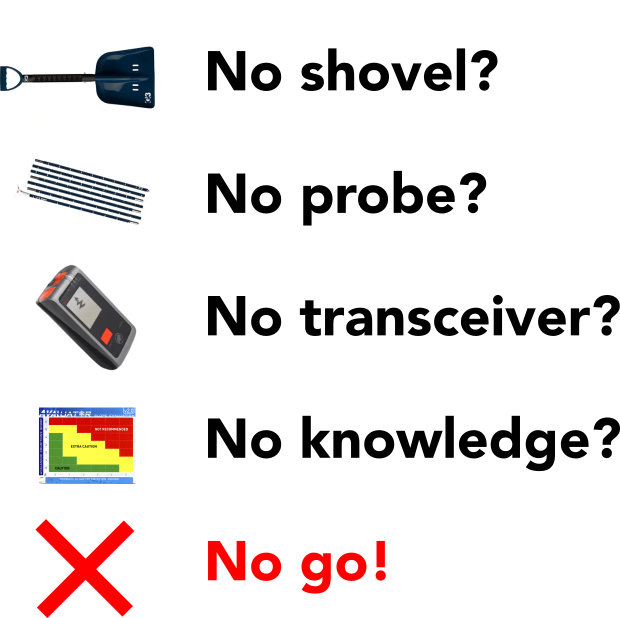Resources
Avalanche Safety – Equipment and
Trip Planning
Avalanche safety is an important consideration for backcountry activities including ski touring, splitboarding, snowshoeing, ice climbing, hiking, and mountaineering.
All trip coordinators and participants on ACC backcountry trips that go into avalanche terrain should have taken an AST or equivalent course and carry functional avalanche safety gear (shovel, probe and transceiver*) plus other safety gear such as warm clothes and the ten essentials. Trip coordinators should have at least one year of experience going on club trips as a participant and being mentored by experienced trip leaders and coordinators before “leading” a backcountry ski trip.
Recommended avalanche transceivers are digital, multi-antenna transceivers. Analog and single-antenna transceivers are no longer considered acceptable. While digital, two-antenna transceivers are still considered acceptable, three-antenna models are strongly recommended.
In the trip description, include a statement such as: “This trip will travel through or near to terrain that may be exposed to avalanche danger. Trip participants are expected to bring avi gear: transceiver, shovel and probe.”
In addition, trip leaders are strongly recommended to create a trip plan that includes an assessment of avalanche dangers and communicate the plan with the participants and to your emergency contact. The Avalanche Canada Trip Planning Checklist is a good template, but it is missing enough pace for describing the location where you are heading to in detail and a location for the trip participant names and contact information. The ACC Vancouver trip or event planner creates that list of names for you.
It’s a good idea to do a refresher every year. Avalanche Canada has introduced their Avi Savvy page that is a good introduction and refresher on Avalanche Safety. It’s a good idea to practice every year with transceivers to improve your avalanche companion rescue skills. Come along or host an ACC trip in December or January when we have fresh powder to practice with.
* The exception is on beginner friendly trips where training of new members is the primary focus. Those trips should not visit any area with a slope of over 20 degrees or below a steeper area that might avalanche.


